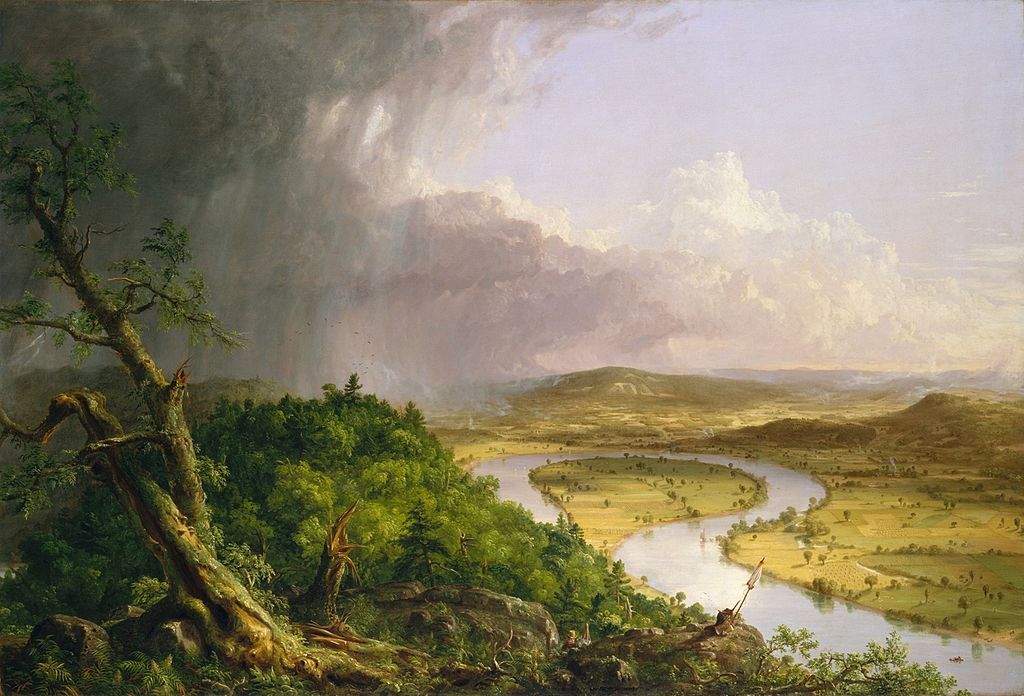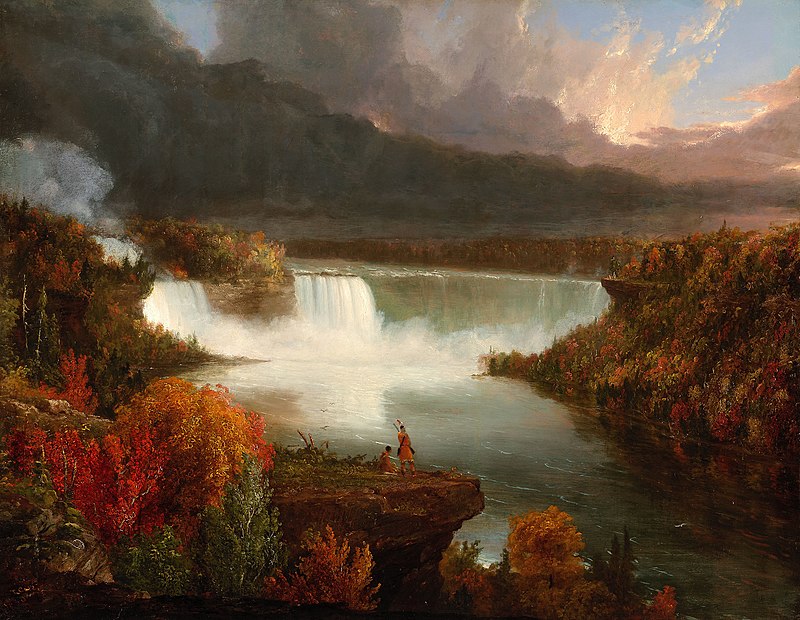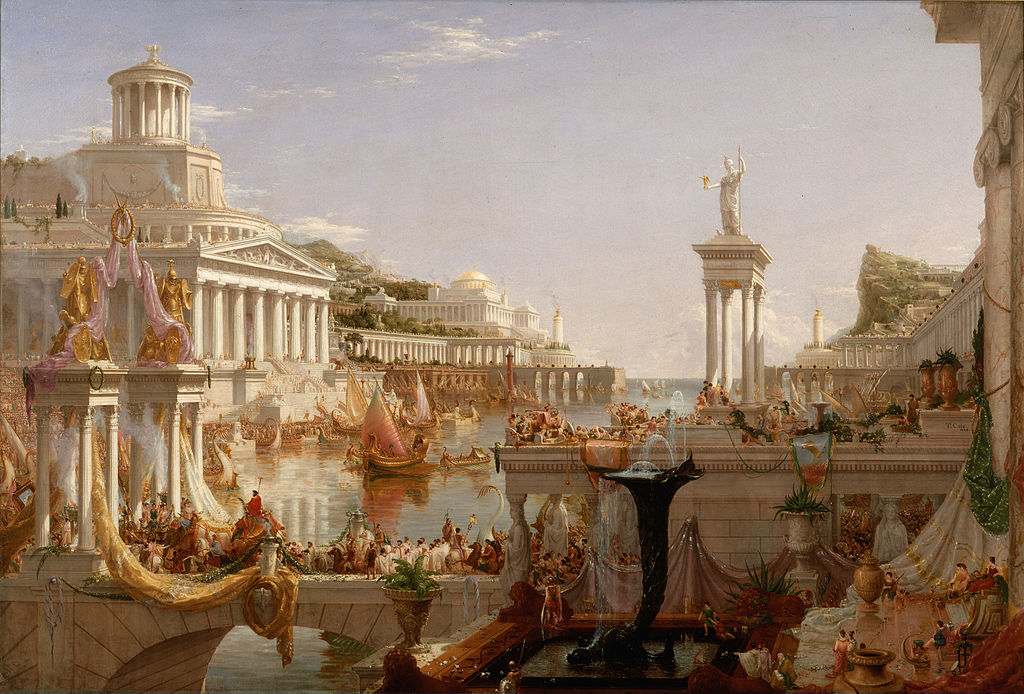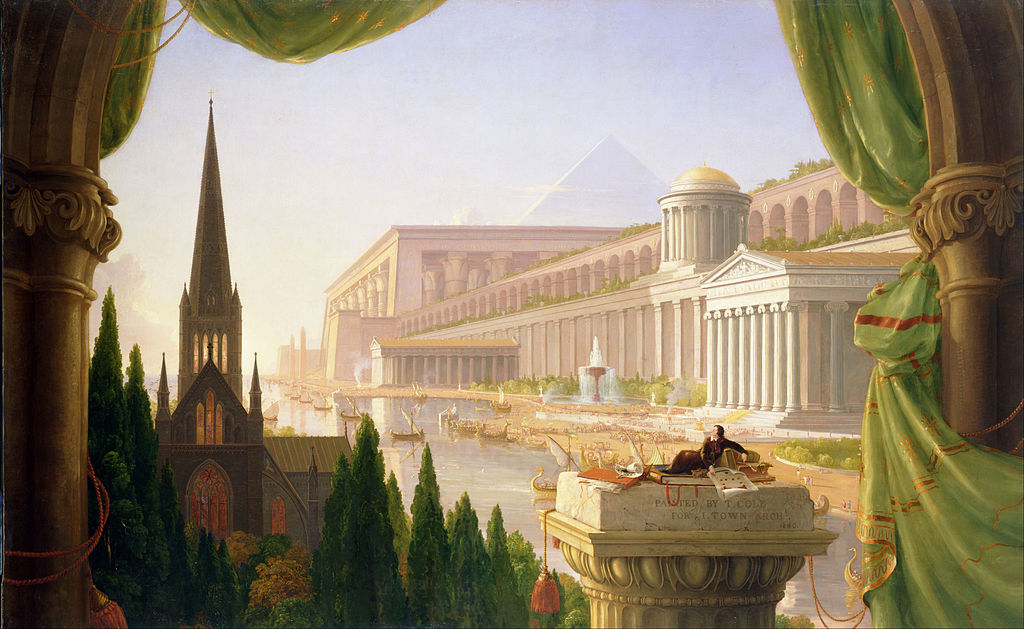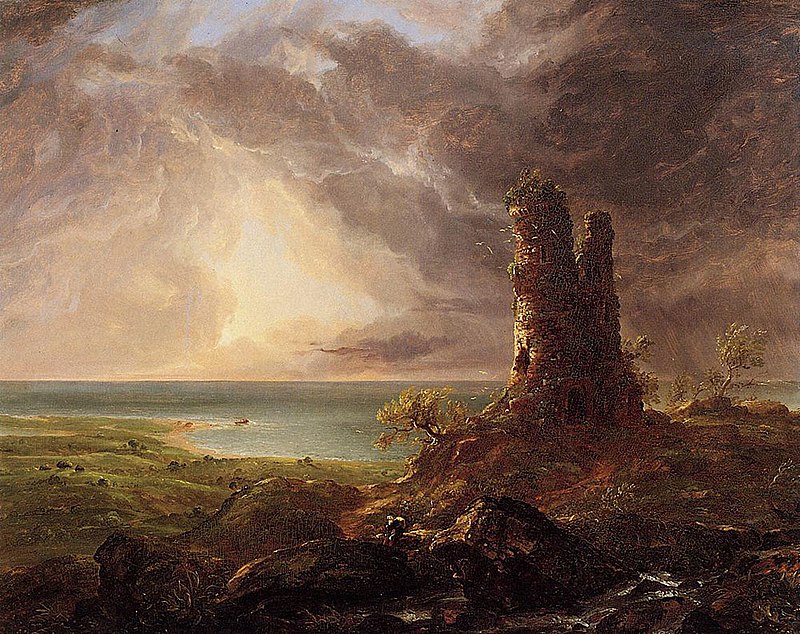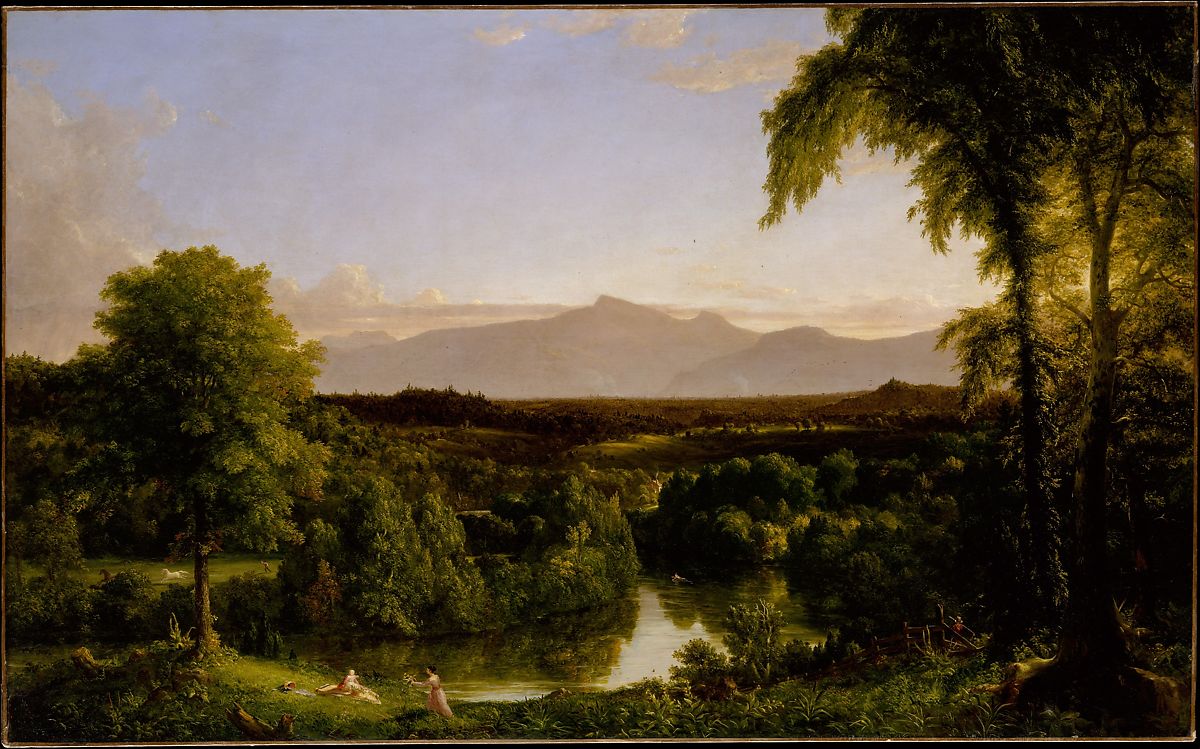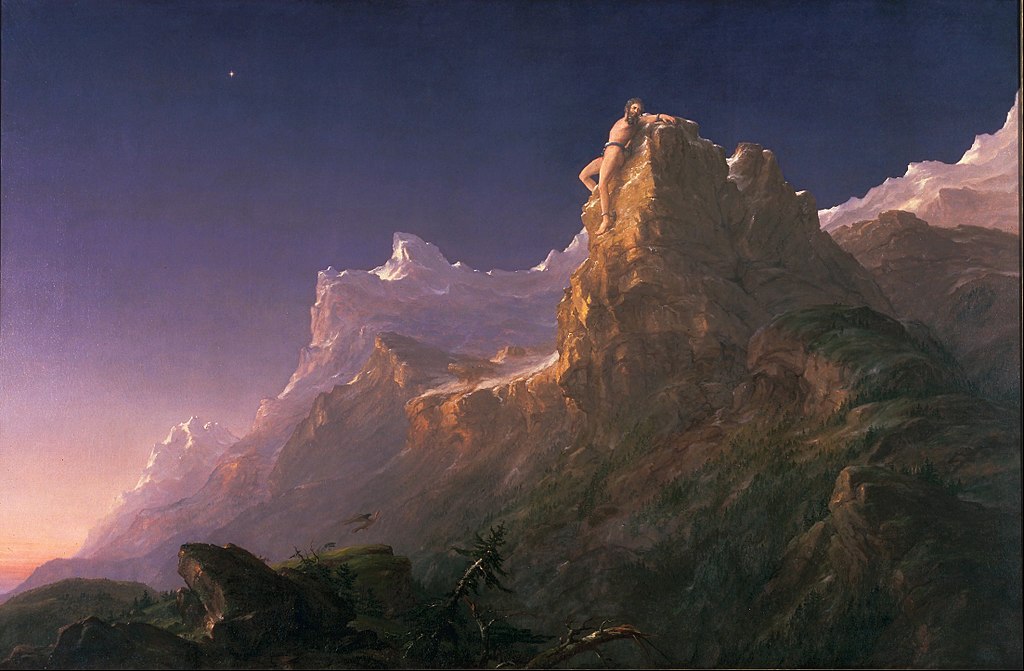An Appreciation:
|
Cole captured the public imagination with sweeping views of America's majestic scenery. Above: "The Oxbow". Below: "Distant View of Niagara Falls."
Quite popular during Cole's lifetime were his allegorical paintings. Above: From the "Course of Empire" series, "Consummation." Below: "The Architect's Dream."
A Romantic admirer of Wordsworth and Byron, Cole was attracted to moody scenes such as "Landscape with Ruined Tower" above.
Below: "View of the Catskills - - Early Autumn." Cole also found inspiration in classical myths, popular legends and stories from the Bible, which he depicted in majestic scenery. Above: "Prometheus Bound."
|
Artist appreciation - Thomas Cole
